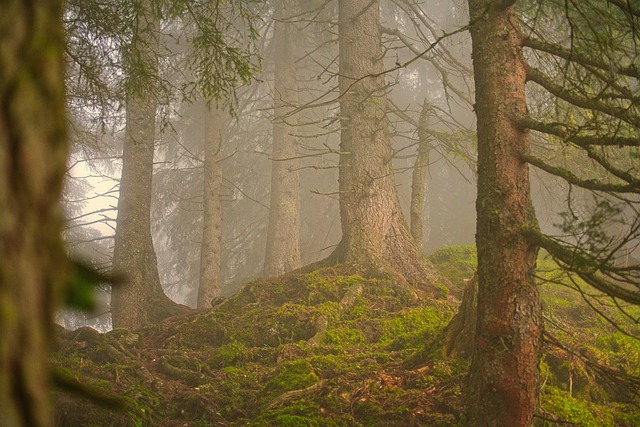Coastal zones are the front line of climate change, experiencing a relentless surge in sea levels, more frequent storm surges, and intensified erosion. While engineered seawalls and levees have long been the primary defense, a growing body of science reveals that forests—especially mangroves, salt marshes, and riverine hardwoods—serve as cost‑effective, adaptable, and ecologically rich barriers. The term “Forests” in this context extends beyond tropical timber stands to include any vegetated wetland that can absorb wave energy, stabilize sediments, and provide habitat for marine species that are themselves vital to human livelihoods.
Forests as Natural Barriers
When a storm wave hits a dense stand of trees, the kinetic energy is dramatically reduced. The canopy intercepts wind, while the roots and trunks act like a natural “fender” system, breaking up the momentum before water can reach the shore. In addition, forests trap and bind sediments, raising the elevation of the land and creating a self‑reinforcing cycle of protection.
- Wave attenuation: A 30‑meter mangrove stand can reduce wave height by up to 70 %.
- Sediment accretion: Roots hold soil, allowing tidal deposition to raise landforms.
- Floodplain storage: Wetland forests absorb excess water during high tides and discharge slowly.
- Carbon sequestration: Dense forests store significant amounts of atmospheric carbon, mitigating global warming.
Mangroves and Coastal Resilience
Mangrove forests, found in tropical and subtropical regions, have long been celebrated for their defensive role. A single meter of mangrove canopy can dissipate the energy of a storm surge, while the complex root systems create a labyrinth that slows water flow and promotes sediment capture.
“Mangroves are the world’s most efficient natural sea walls,” notes Dr. Elena Martínez, a coastal ecologist at the University of Miami.
Beyond protection, mangroves serve as nurseries for fish and crustaceans, contributing to local fisheries. They also act as biofilters, improving water quality by trapping nutrients and pollutants.
Case Studies: Coastal Towns Thriving with Forested Buffers
Across the globe, communities have harnessed forest ecosystems to safeguard lives and assets. The following examples illustrate the tangible benefits of preserving and restoring vegetated buffers.
- Fort Lauderdale, Florida – The city’s partnership with the National Oceanic and Atmospheric Administration led to a mangrove restoration project along the coastline. Since 2012, local officials report a 20 % reduction in storm surge damage during Category 1 hurricanes.
- Patenga, Bangladesh – Here, a community‑led mangrove replanting initiative has increased tree density from 30 % to 65 % over a decade, correlating with a noticeable decline in saltwater intrusion into freshwater aquifers.
- Amsterdam, Netherlands – Dutch engineers integrated a network of salt marsh forests into the “Room for the River” program. The wetlands have absorbed 15 % of the water volume that would otherwise overtop the city’s dikes during extreme tide events.
Economic Benefits Beyond Protection
Investing in forests provides a multiplier effect on local economies. Forested buffers generate employment opportunities in planting, maintenance, and ecotourism. Moreover, they safeguard fisheries and tourism revenue by preserving the health of adjacent marine ecosystems.
- Employment: Each hectare of mangrove forest supports 1.5 full‑time jobs in nursery production, planting, and monitoring.
- Fisheries: Healthy mangroves support a 10–15 % increase in fish yields within a 5‑kilometer radius.
- Tourism: Coastal forests attract eco‑tourists, contributing to a 5 % boost in local hospitality revenues annually.
- Climate mitigation: Sequestration of approximately 2.5 t CO₂ per hectare reduces the net carbon footprint of coastal development.
Challenges Facing Forested Coasts
Despite their advantages, forest ecosystems are under threat from a combination of anthropogenic pressures and climate‑driven changes.
- Urban expansion: Coastal real‑estate development often leads to clearing of mangroves and salt marshes.
- Pollution: Runoff from agriculture and industry introduces excess nutrients, triggering algal blooms that stress tree health.
- Sea‑level rise: Accelerated inundation can submerge forested habitats, reducing their ability to trap sediments.
- Invasive species: Non‑native plants can outcompete native mangroves, diminishing biodiversity and resilience.
- Fire risk: Drier conditions, amplified by climate change, increase the likelihood of destructive fires in tropical forests.
Climate Change and Deforestation Synergy
The interplay between climate change and deforestation creates a feedback loop that accelerates coastal vulnerability. When forests are removed, the loss of root systems leads to increased shoreline erosion, which in turn forces further clearing of vegetation to protect remaining properties. Simultaneously, the combustion of biomass during fire or the decomposition of lost vegetation releases additional greenhouse gases, contributing to the very climate change that drives sea‑level rise.
Policy and Community Actions
Governments, NGOs, and local communities must collaborate on multi‑tiered strategies to protect and restore forests along coastlines.
- Legislative protection: Enacting laws that designate mangrove and salt marsh areas as protected zones.
- Incentive schemes: Offering tax breaks or payment for ecosystem services to landowners who maintain or restore forested buffers.
- Integrated land‑use planning: Coordinating coastal development with ecological requirements to avoid fragmentation.
- Public education: Raising awareness about the role of forests in disaster risk reduction.
- Scientific monitoring: Deploying long‑term ecological and hydrodynamic monitoring stations to track forest health and shoreline dynamics.
Innovative Solutions: Reforestation and Restoration
Technological advances now enable more efficient and scalable reforestation. Drone‑assisted planting, genetically informed seed selection, and community‑based nurseries accelerate the regrowth of critical forest ecosystems.
“Using drones to plant mangrove seedlings reduces labor costs by 40 % while ensuring precise spacing,” says Miguel Torres, a conservation technologist.
Restoration projects also increasingly incorporate mixed‑species plantings, creating resilient mosaics that can adapt to changing salinity and water levels.
The Future Outlook
As sea levels continue to climb, the role of forests as guardians of coastal communities will only grow in importance. Predictive models indicate that a 1‑meter rise in sea level could inundate up to 12 % of the world’s coastal population by 2100. However, strategic forest restoration offers a viable path to mitigate this risk. By coupling natural defenses with adaptive management, societies can safeguard livelihoods, protect biodiversity, and contribute to climate mitigation simultaneously.
In sum, forests—whether towering mangroves along tropical shores or gently sloping salt marshes in temperate regions—are indispensable allies in the battle against rising seas. Their multifaceted benefits, ranging from physical protection to economic and ecological services, make them a cornerstone of sustainable coastal resilience. The challenge ahead lies not in recognizing their value but in acting decisively to preserve, restore, and expand these living shorelines for generations to come.




